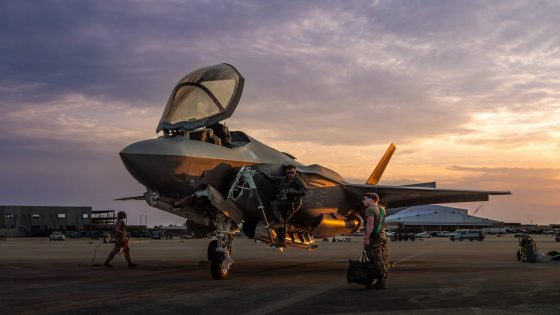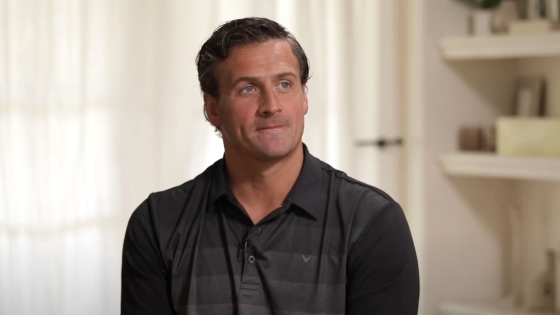The Air Force is mulling a bureaucratic shuffle that would refocus the service on four key areas it believes can improve how it organizes, trains and equips airmen for war.
Those core missions â combat readiness, careerlong training, acquisition and future force planning â will eventually fall under the purview of four major organizations, dubbed âinstitutional commands,â in charge of force-wide planning and policymaking, Air Force officials said in public remarks earlier this month.
RELATED
The plan aims to streamline the Air Forceâs fragmented internal structure, which currently spreads those missions across nine major commands that oversee various types of aircraft and geographic regions, to become more effective and mirror other branches of the armed forces.
The four commands would include:
- Air Combat Command, which would expand its focus on fighter, intelligence and other units to instead manage readiness for the entire service;
- Airman Development Command, which would handle education and training over the course of a service memberâs career;
- Air Force Materiel Command, which would run acquisition programs across the force; and
- Integrated Capabilities Command, which would handle long-term planning.
Those core commands would absorb some assets from current Air Force major commands, like Air Mobility Command and Air Force Global Strike Command, to give them the resources they need to manage troops and weapon systems across the force, Chief of Staff Gen. David Allvin said in a talk at the Air and Space Forces Association June 13 and in a roundtable with reporters at the Pentagon the following day.
RELATED
:quality(70)/cloudfront-us-east-1.images.arcpublishing.com/archetype/QIKCPX7R6BCKJARM3KKNG3JJLY.jpg)
In practice, it could look much like the Army, which since 2018 has spread those missions across Army Training and Doctrine Command, Army Forces Command, Army Materiel Command and Army Futures Command.
Itâs unclear how the other current major commands will interact with the four overarching organizations, or whether the service will look to add more subordinate commands as well.
The Air Force would also turn each of its service components into standalone organizations that supply forces to higher combatant commands around the globe. Right now, some service components, like Air Forces Cyber, fall under Air Combat Commandâs purview, while others like Pacific Air Forces and U.S. Air Forces in Europe, donât report to a higher Air Force command and have more control over their own planning.
âWe adapted to the time that we were in. … But when you think about the things that the environment asked of us, it drove us to be a little bit more diffuse and distributed,â Allvin said. âWe didnât have a clear existential threat like we had in the Cold War.â
The reorganization is the latest piece of a sweeping effort launched in February to realign the Air Force to outpace China and other advanced militaries after decades of fighting in the Middle East, when the Air Force responded piecemeal through siloed commands that focused on a single type of air mission, like bombers or tankers. Now the service wants a more holistic approach to lending those air packages to the joint force.
Some pieces of the plan, including standing up the new Integrated Capabilities Command and turning Air Education and Training Command into the new Airman Development Command, were unveiled by Air Force Secretary Frank Kendall in February.
Now, additional parts of the puzzle are beginning to emerge.
Air Forces Northern, Air Forces Southern and Air Forces Central â which supply forces to commanders in North and South America and the Middle East â would move out from under Air Combat Command to instead sit on par with the other service components like U.S. Air Forces in Europe-Air Forces Africa and Pacific Air Forces.
With less to watch over, ACC would work with âother institutional commands to generate the readiness, the exercises, have the inspections to ensure that weâre mission-ready, not just task-ready,â Allvin said.
âACC is transitioning into a different type of a command,â he said.
That would include ensuring the Air Forceâs combat wings are prepared to fight, including the attack assets that fall under so-called âdeployable combat wingsâ or the wings that will supplement them with airlift and other assets, referred to as âcombat generation wings.â Theyâll leave behind separate units tasked with keeping Air Force bases running at home during deployments, as well as wings that perform their mission from home station, like intercontinental ballistic missile units.
Lt. Gen. Adrian Spain, the serviceâs deputy chief of staff for operations, said the Air Force predicts it will be eventually be able to resource 24 deployable combat wings, 16 of which would be active duty and the remainder from the reserves. Those wings are expected to dispatch teams of airmen from the same bases who have already trained together, rather than filling empty jobs overseas as needed from different squadrons.
Their precursor units, referred to as air task forces, are spinning up this summer at six bases across the country in preparation for deployments to the Middle East and the Pacific in October 2025. Another three are slated to replace them overseas in 2026.
ACC will need to work with the other commands to ensure airmen across the force are getting the training they need, beyond the fighter units it has traditionally managed.
âThereâs going to be this relationship in building the exercises, building the training mechanism for the whole force that deploys not just what has traditionally been the fighter force,â Allvin said. âThatâs where ACC is going to be really accountable and responsible for the readiness of the whole force. Thatâs a big mission.â
If executed well, the revamp could benefit the service, said Clint Hinote, who worked on the reorganization before retiring from the Air Force as its three-star strategy boss in 2023. He cautioned that it could encounter opposition if the service opts to move the three- and four-star leadership positions that currently govern those commands. But he argues failing to evolve would be a mistake.
âI think they do it wrong by not changing,â Hinote said.
Courtney Mabeus-Brown is the senior reporter at Air Force Times. She is an award-winning journalist who previously covered the military for Navy Times and The Virginian-Pilot in Norfolk, Va., where she first set foot on an aircraft carrier. Her work has also appeared in The New York Times, The Washington Post, Foreign Policy and more.
Source Agencies


